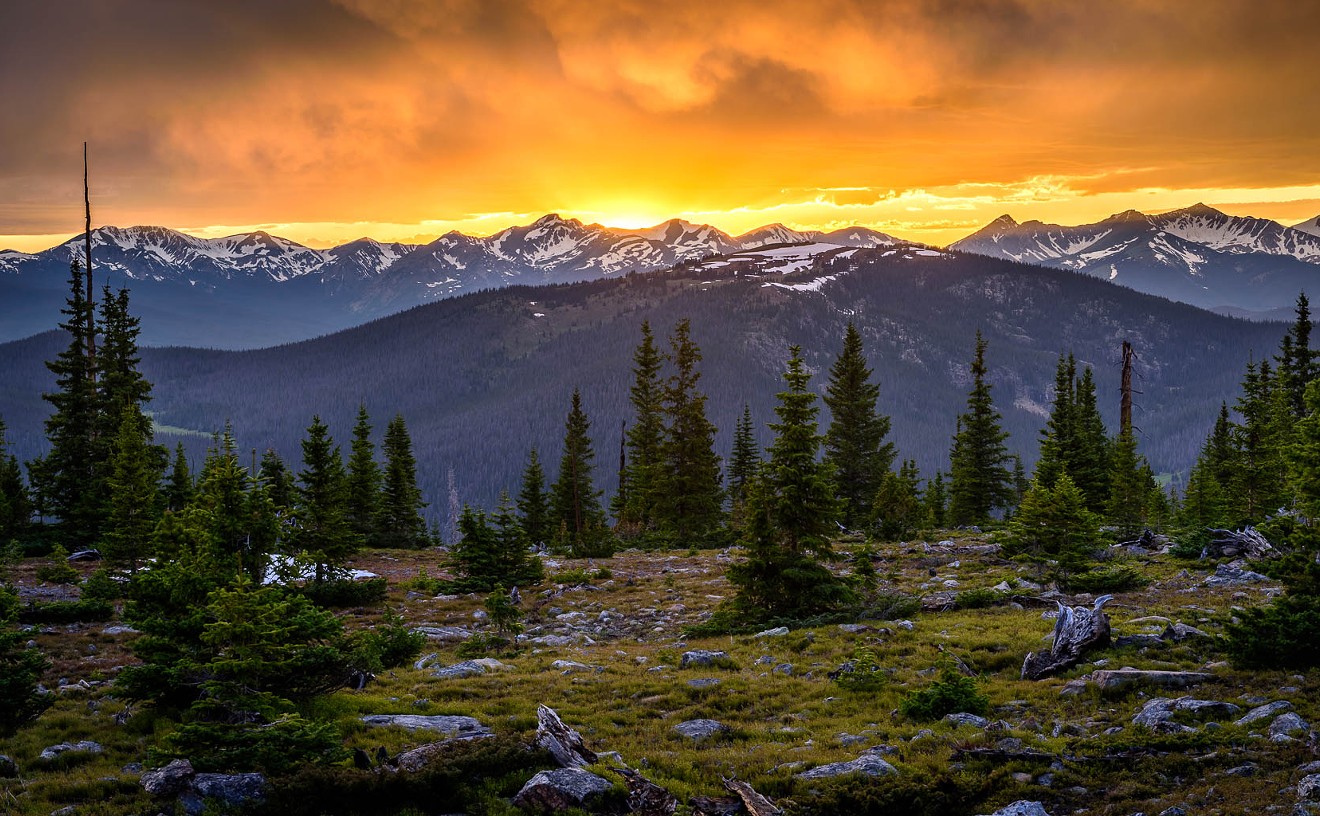New Mexico's modern art history is intertwined with Colorado's, if only because so many artists from each state show their work in the other -- and it's been this way for decades. A case in point is Sam Scott: Desert Light, a strong exhibit that's currently on view at the William Havu Gallery. This well-known New Mexico artist has regularly shown his paintings and works on paper in Colorado over the past forty years or so.
See also: The Five Best Denver-Area Art Shows in 2014
Scott studied art in the 1960s at the Maryland Institute College of Art, where his teachers included Philip Guston and Clyfford Still, among others. Scott moved to New Mexico in 1969, and soon after began exhibiting his work there and throughout the country. Although Scott spent a few years teaching in Arizona, he has lived most of his life in Santa Fe and Pilar.Stylistically, Scott's work is an heir to the abstract expressionism he learned at Still's knee. But the signature automatist sensibility of that style has been moderated by Scott. Instead of creating non-objective compositions, like Still did, Scott typically includes abstracted references to the landscape. The title of the Havu show, Desert Light, hints at its placement in the landscape tradition.
There are several impressive Scott paintings here, some of which are fairly large. In the stunning "Sound of the Cicadas," Scott fills the bottom two-thirds of a canvas with dense skeins of lines in oranges and browns. Glimpsed here and there are cartoonish representations of plants, but this imagery has been almost entirely obliterated by scribbles and an overlying linear element. Only the passage across the top, which refers broadly to a bright-blue sky, tips off the viewer that this is a scene found in nature as processed through Scott's dynamic brushwork. Other works that likewise use scenery as the taking-off point for abstractions include "Wind & Weather" (pictured), "Garden of Umbers" and nearly three dozen others.
Sandwiched in between the beginning and the end of the Scott show, in the center and window spaces, is the small exhibit Eugene Newmann, which features paintings and works on paper by another key figure in New Mexico abstraction. These paintings, such as "Falls (Fragments)," in which jagged shapes are arrayed against a gorgeous if dingy yellow field, are particularly strong.Up on the mezzanine, Dana Newmann is an intimate presentation of funky-surrealist found-object sculptures in which the artist fills drawers and boxes with evocative elements, including Native American artifacts.
Turn the page to see more work by Scott and the Newmans.Desert Light and the two Newmann displays run through January 31 at Havu, 1040 Cherokee Street. For more information, call 303-893-2360 or go to williamhavugallery.com.










